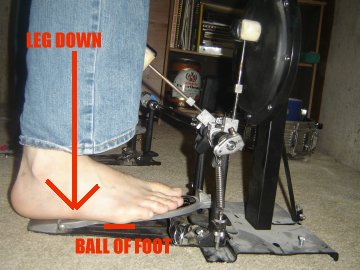Heel Toe
Contents
What this technique does is gives you two beats from one single movement. For example, in a straight 16th note double bass pattern, you would move your legs 16 times using the standard heels up method. The heel-toe lets you cut that in half so now you’re only moving your legs eight times. Basically, you should be able to play twice as long. Here’s how it works…

There are two parts to each leg movement. First, you want to bring the entire weight of your leg down onto the footboard. Even though it uses the term heel, you actually want to make contact with the balls of your feet. If your feet are small enough, or if you have longboards, you can certainly use your heels. So that’s the first beat produced from this one leg movement.
As you bring your leg up to let it drop again, use your toes to hit the footboard a second time. This produces your second beat and once you’ve done that, you’re ready to drop your foot and start all over again. It might seem awkward at first, but once you get the motion down, it’s a pretty easy technique.
The hardest part is switching cleanly between it and heels up or down. It can also be difficult to get a nice, even, controlled sound. I’ve prepared a few exercises to help you work on controlling it and switching in and out of it. I’ll post exercises soon, in the meantime, check out this video to see the technique for yourself.



New! Comments
Leave your comments below.